Comments from the Chair
Sierra Club elections
I write this before completion of elections. On line balloting of Lone Star Chapter and Alamo Group ExCom candidates should result in easier balloting for our members, more votes cast, and substantial cost savings for our Chapter and Group organizations with avoidance of postal fees. I hope everyone voted. Sierra Club is almost unique among environmental organizations in having elected leadership and a largely volunteer organization.
Holiday party, clean air, and Deely coal plant shutdown
Our Alamo SC Holiday Party was joined with our Climate Action SA Coalition colleagues to celebrate the closure of the highly polluting Deely Coal Plant units 1 and 2 by the end of 2018. The holiday party was held together with our Climate Action Allies — including Public Citizen, Southwest Workers Union, Environmental Defense Fund, and many others — on December 15th, to celebrate this important milestone in our community efforts to improve our air quality and promote environmental justice.
There was a very good turn out, with music and food, as well as displays explaining the important history of the struggle that resulted in this achievement. The success of the anti-Deely campaign will, hopefully, inspire us to get the Spruce coal plants 1 and 2 shut down soon also.
Climate change and Climate Action & Adaptation Plan
Since the summer of 2017, the City of San Antonio (CoSA), at the direction of the Mayor and Council, has been working on the development of a Climate Action & Adaptation Plan (CAAP) to address changes anticipated by climate science. Alamo Sierra Club leaders have been heavily involved in committee work in the development of this CAAP.
The first draft final CAAP is scheduled for public release on January 25th. Subsequently, there will be a 30 day public comment period.
We are pushing for a strong plan with specific goals and concrete implementation strategies. We need your support to achieve a strong CAAP. Visit the SA Climate Ready website to learn how to get involved
CPS Energy long overdue for reform
CPS Energy is our single largest local carbon emission source, and it is vital that its carbon emissions be reduced in short order. So far CPS continues to promote their “Flex Path”, which is a commitment to “wait and see” business as usual.
In contrast, many other utilities are committing to shutting down coal plants and moving to renewable energy. But, CPS chooses to be a laggard, not a leader. In addition, we are anticipating rate increase proposals this year.
We believe that no rate increase should be approved before major changes in CPS governance occur. Currently, CPS functions basically as a private corporation, providing revenues to CoSA in exchange for its freedom to operate independently.
This model is no longer working. CPS needs to be responsive to its community owners. CoSA needs to provide stronger direction and better oversight. CPS needs to have the transparency provided by other public entities.
In this regard, SAWS does a much better job, publishing its meeting agendas and minutes, live streaming its Board meetings, and listening to Citizens to be Heard, none of which is provided by CPS. SAWS also has public input committees that advise on rate increases and other matters. CPS has only a “Citizens Advisory Committee” that meets in secret and has no communication with citizens. Resource generation planning is developed in secret.
This is all unacceptable and changes are long overdue. We have asked for changes for over 2 years and have been ignored by CEO Paula Gold Williams.
Support the Alamo Group this year
Your local Sierra Club needs financial and volunteer help! We need your resources to help us deal with the Texas Legislature, and the spring CoSA elections. Please get involved in your local SC work. Your financial and volunteer help are desperately needed for our success. Contact Dave Wells to make a contribution [(703) 201-7732].
Thank you for your past support! Let's make 2019 our greatest year ever!
Local media are essential
I urge SC members to subscribe to and “share” local media resources such as SA Express News (SAEN) and Rivard Report. The recent SAEN story about “Big Boy” — the costly new generator brought into SA from Mitsubishi Japan — is an example of how our local journalists like Rye Druzin and Brendan Gibbons are so important in informing us of local stories of environmental importance. We would be much more ignorant of our local environmental challenges without the important work of these trained local journalists.
Transportation and mobility
The Rivard Report informs us that the “ConnectSA” Task Force, set up last spring as a joint Bexar County, COSA and VIA effort, has released a draft proposal to address our mobility needs. Transportation is another huge contributor to greenhouse gas emissions. Our current growth pattern of endless sprawl, together with our lack of adequate mobility choices (including transit), is a critical area to be addressed by the CAAP.
If mobility and sprawl can be successfully addressed, not only will our air quality and congestion problems be improved, but our health and quality of life. Please the see full report for more details. We expect this to be a critical issue for us in 2019.
What to expect from the Legislature
Our January General Meeting (Tuesday, January 15th, 6:30 pm, Eco Centro, 1802 N. Main Ave.) will have speakers from our local Texas delegation offices to provide us an early look at what to expect from our state government. Please get involved as the opponents of local government rule remain strong, especially in terms of environmental protections such as our tree ordinance, efforts to ban plastic bags etc. For more, read the Lone Star Chapter's 2019 Texas Legislative Priorities.
by Terry Burns, M.D., Alamo Group Chair
Get Ready for the State Legislature
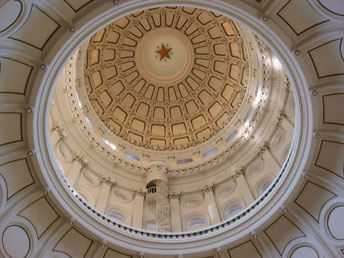
State leaders will gavel in the 86th Texas Legislature on January 8th. To help prepare, staffers from some of our local delegation's offices will give us a look at what to expect.
Tuesday, January 15th
6:30 p.m. {refreshments served beginning at 6}
William R. Sinkin Eco Centro, 1802 North Main Avenue
Map
We will discuss effective strategies, good and bad bills, attacks on local control and environmental protections, and other challenges expected in the 2019 session. For more, read the Lone Star Chapter's 2019 Texas Legislative Priorities.
This event is free and open to the public.
Want to Feel Insignificant? Consider the Yellowstone Caldera
The Yellowstone Caldera, also known as the Yellowstone supervolcano, is about 34 x 45 miles in size, its area occupying about 30% of Yellowstone National Park. Have a look at the park map (pdf file) on which its extent is marked.
This is the largest active volcano in North America. It last erupted 630,000 years ago and three times in the last 2.1 million years. It is arguably overdue for another eruption but is unlikely to do so anytime soon, but might well in the next 100,000 years. When it does, it will radically alter a fair bit of what is now the continental US as far as plants and animals are concerned. In comparison, Mt. Rainier (article in this newsletter) and Mt. St. Helens (another article) are thought to be much more dangerous in the near term.
In addition to the caldera, these pictures are about the Yellowstone River, which has its headwaters in the Absaroka Range in the southeast corner of the park (see the map), left of Lake Yellowstone in the 1st picture below. The river flows from the lake through the Hayden Valley and the Grand Canyon of the Yellowstone, and then north out of the park into Montana. Ultimately, it joins the Missouri, of which it is the major tributary, in western North Dakota.
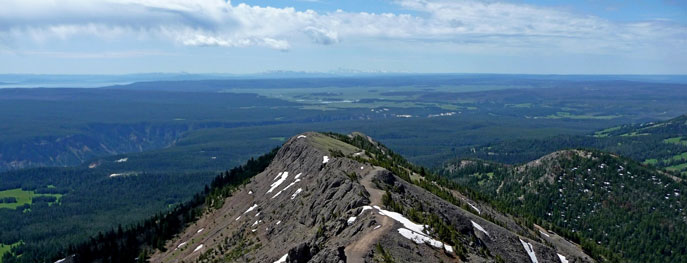
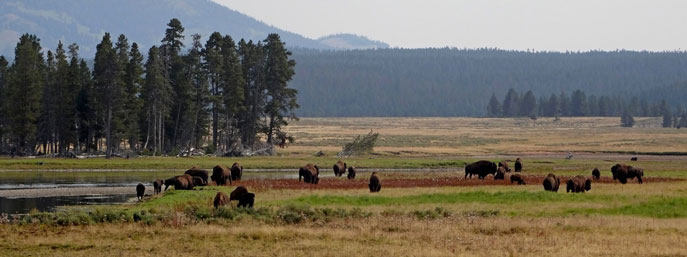
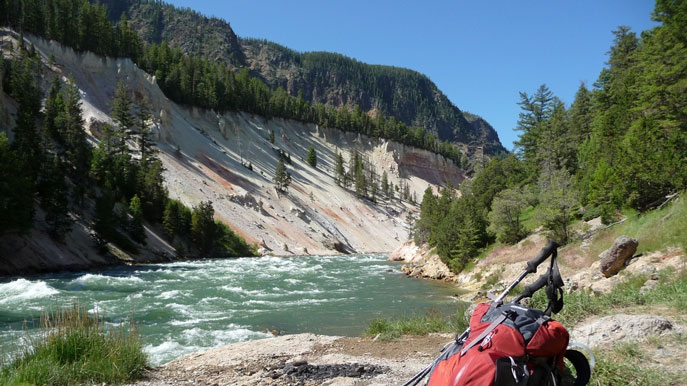
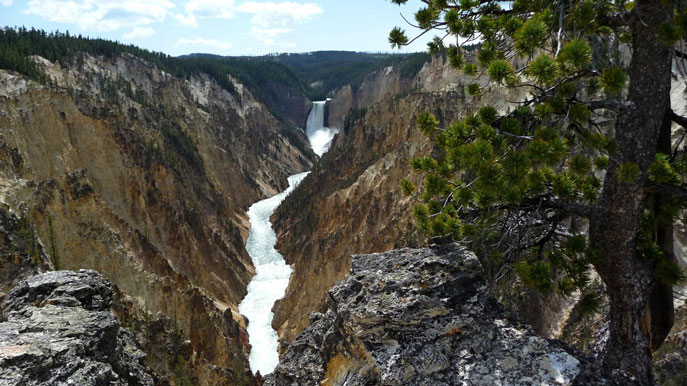
by Kevin Hartley, Alamo Group Outings leader

Outings: The Call of the Wild
Visit the Alamo Sierra Club Outings page on Meetup for detailed information about all of our upcoming Sierra Club Outings.
The Alamo Sierran Newsletter
Richard Alles, Editor
Published by The Alamo Group of the Sierra Club, P.O. Box 6443, San Antonio, TX 78209, AlamoSierraClub.org.
The Alamo Group is one of 13 regional groups within the Lone Star Chapter of the Sierra Club.
Keep your email address current!
Send updates to Loyd Cortez, providing your name, address and membership number (if known).
Changed your mailing address?
Have you moved? Let us know by sending your old address, your new address and your member number (look on the upper left corner of your mailing label) to: address.changes@sierraclub.org.
Go online for the latest news and events
 |